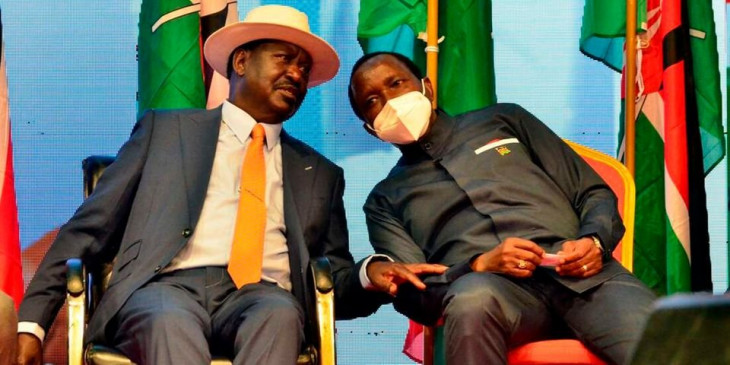Rhetoric unwelcome in Kenya, DRC relations

Kenya has, for long, had close ties with the Democratic Republic of Congo. Nowhere else is that relationship more pronounced than in shared music and dance styles. Indeed, music historians trace the evolution of Kenya’s benga to Congolese influence.
Congolese artists are household names in Kenya, and many Kenyans effortlessly sing Lingala, often without understanding the meaning of the lyrics. Such is the influence of Congo on Kenya on the cultural scene.
But there is more. For long these two nations have been trade partners. Last year, Kenyan exports to DRC were worth Sh14.26 billion, an increase from Sh13.4 billion registered in the previous year.
The trade with DRC is hugely in favour of Kenya. The imports from DRC in 2020 were worth Sh2.7 billion, up from Sh1.9 billion in 2019 and Sh1.2 billion the previous year.
DRC has applied to join the East African Community. DRC’s economy at $50 billion in 2020 is half that of Kenya, but this is one area where numbers don’t tell the whole story.
DRC will bring some 90 million people and a vast pool of natural resources into this common market. If there is a country that is courted globally, then it is DRC. The electric car technology, for example, is dependent on minerals largely from DRC.
Today several of Kenyan businesses are operating in DRC. Kenya Airways and Jambojet, both Kenyan aviation firms- fly to DRC, and Equity has expanded into this market. Equity is now the dominant bank in DRC controlling over a quarter of the market there.
The DRC operations, according to some estimates, contribute up to 50 per cent of Equity’s profits. For reasons of trade, culture and good manners, it is important that Nairobi cultivates respectable relations with Kinshasa.
This vast country of expansive tropical rain forest, massive rivers and nearly every significant metal is a sleeping giant; save for its musicians who have ruled the roost of entertainment in Africa.
At independence, DRC was the second most industrialised country in the continent after South Africa. But fate conspired to hold it back, yet in the recent, she has shown signs of turning the tide.
Kinshasa has much more potential than it’s GPD reflects. The reasons that hinder the growth of DRC’s economy and manufacturing sector are not too hard to find.
First is political instability much of which is not of the making of the Congolese people but traceable to the doorsteps of western hegemonic interests.
This past week the Deputy President of Kenya, baffled all when he referenced DRC in near derogatory remarks.
Kenya’s number two politician was addressing a political rally in Nyeri when he let it out that DRC has no cows and is only known for music.
It is fine when Kenyan politicians take a jibe at each other, refer to their opponents with insults in one sentence while still calling each other “my brother”, a phrase that may not have much meaning anymore.
But it is a different ball game, when the local habits are exported and to a country in which Kenya has so much at stake.
It also raises a question of judgement. A government official is still a government official, even if at a political event and in the deepest of villages.
The international partners do not differentiate statements made for political expediency and to score quick points, compared to policy positions of the government.
Statements on the political trail are also indications of intent should one ascend to power.
They could be seen as positions of the incoming administration and could make the target country jittery, and in this case, possibly sour the relations among East African partners, where DRC is expected to be a player not in the too distant future.
The relations between Kenya and DRC are too important to be wasted on campaign rhetoric. Some subjects must be a no-go area.
—The writer is dean, School of Communication, Daystar University















